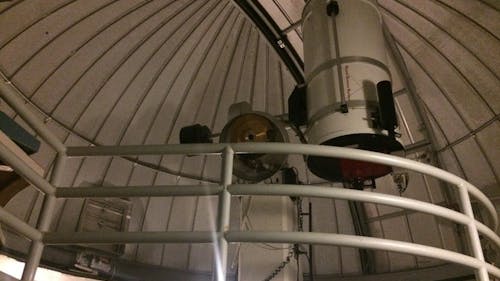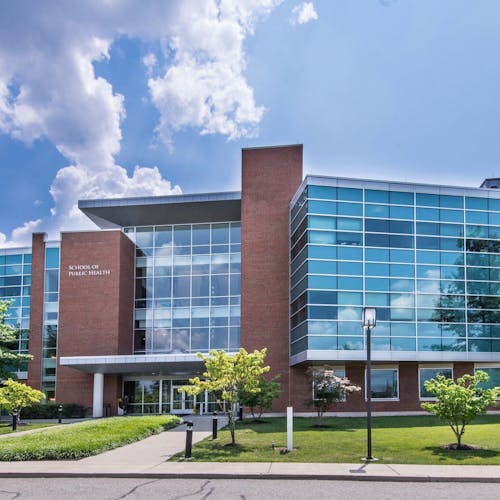20-inch telescope gives Rutgers students glimpse of stars

Approximately three Thursdays out of every month, Rutgers students can take a closer look at the moon, planets and night sky thanks to the Rutgers Astronomical Society and a 20-inch telescope on Busch campus.
The Rutgers Astronomical Society has hosted open-night viewings at the Robert A. Schommer Astronomical Observatory located on the roof of the Serin Physics Laboratories — for years, the telescope on its roof for viewings was often accompanied by lectures and demonstrations.
Carlton Pryor, a professor in the Department of Physics and Astronomy, oversees the club and has spoken at past telescope observations to students.
Dependent on the weather, Pryor said he tries to observe as much as he can with the students, and focuses on well known moons and planets — as those are the ones most students are more interested in.
“The moon is always going to be there, that’s a good one to look at,” he said. “Plus we always try to see if there are any visible planets, such as Venus or Mars. Any planets or moons that we can see up there is always nice, and then a variety of things like star clusters, binary stars bright galaxies, anything like that.”
The greatest difficulty in conducting observations in New Jersey is that it is a very light-polluted area, he said.
An abundance of street lights can make observations difficult, as the telescopes are sensitive to light. Pryor said the group usually reschedules on nights with cloudy or rainy weather.
“Things like nebulas and star clusters are usually a lot more faint in the distance, and because Rutgers is situated closely to a lot of major roads with lights, they usually just look like blurs in the distance,” Pryor said. “But, we usually work around that (and) try to focus on what we can see through the telescope as opposed to struggling to see what we can’t.”
The department has hosted these open telescope nights for the past 25 years since the telescope was developed, Pryor said.
The money for the telescope was originally cut out of the budget, but faculty raised money to get it completed. Prior to this telescope, students would usually hold observations at the Daniel S. Schanck Observatory on the College Avenue campus, which dates back to the 1860s. The new observatory was built after the Schanck building started to deteriorate, Pryor explained.
The viewings are open to all Rutgers students, as well as the general public.
“We think it's something worth doing in terms of astronomy, and astronomers usually like to have fun with what we are doing,” Pryor said. “We’re generally supported by the population, and I think it’s only right that we pay them back in regards of giving them a glimpse of what we find, as well as being entertaining.”
New Jersey has the most astronomy groups per capita in the country, Pryor said. The department has reached out to various groups in the past and has made connections in the area to other clubs.
He said these connections show why it is important to do community outreach, as it can create more discoveries and collaborative work.
The club has also been trying to arrange more field trips to foster collaboration.
“The more we put our names out there, the more likelihood that we will be able to do more impactful work,” Pryor said. “By hosting these open telescope nights, we are more able to connect to the community and maybe do some more innovative discoveries.”



